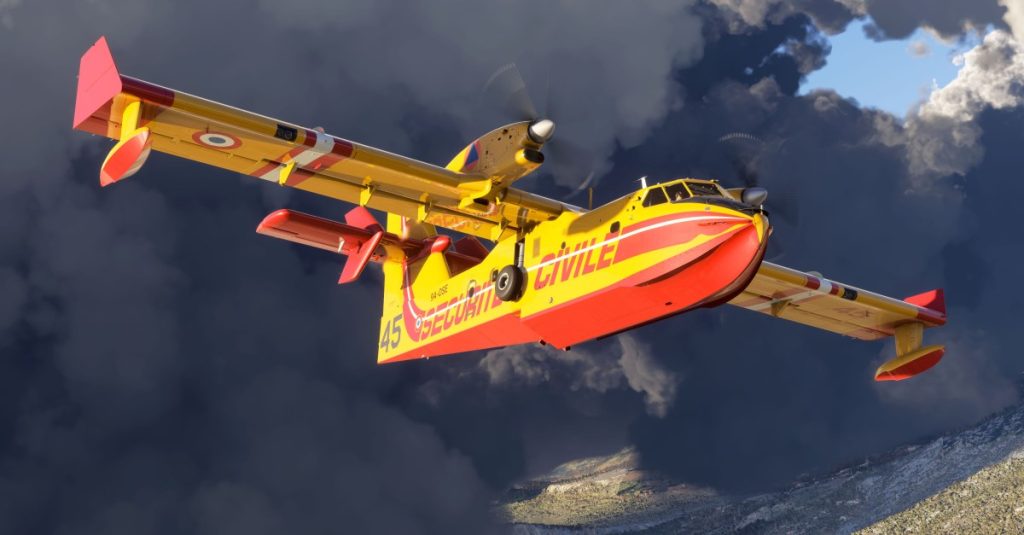
When the reboot of Microsoft Flight Simulator launched in the summer of 2020, I called it the most remarkable new game in a generation. By combining data from Bing Maps with a next-generation physics-based flight model, real-world weather data, and live air traffic, Xbox Game Studios and its partners at Asobo Studio succeeded in creating something extraordinary. But the software was not without its flaws.
At launch, fans complained of the monstrous install size of more than 120 GB just to get started. There were graphical hitches early on as well, including rivers that tried to crawl up mountainsides and cavernous holes in the Earth that seemed to defy explanation. But the biggest oversight by far was the lack of any real in-game progression, or even a series of engaging missions to fly. Four years later, these development partners are back with a sequel, titled Microsoft Flight Simulator 2024, and I am once again floored by the scope of their ambition.
The marquee feature this time around is the game’s new career mode, which draws from more than 3 million procedurally generated activities scattered all around the world. These include tasks as benign as delivering VIP passengers to their vacation getaways, or as technical as dusting crops on a windy hillside in French wine country. Some missions include towing a banner, or engaging in helicopter-based search-and-rescue operations in the backcountry. Regardless of the activity, every mission features a full written briefing, as well as an isometric flight plan that clearly shows what players will need to do to be successful.
Of course, not every activity will be available at the start of the game. Before they can fly a given mission, players will first need to pass an in-game flight test to become certified in that particular activity. Each of the game’s 64 certifications are exam-based, and each exam will cost you in-game currency. So even if you can open up the woodland firefighting branch of the certification tree, you might want to take a few practice flights before you pay for that check-off flight in a massive two-engined water-bomber.
What’s even more interesting, however, is the team’s global approach to the availability of aviation-based careers in Microsoft Flight Simulator 2024. Players can start their career from literally any airport in the world. The game will then populate the airport with nonplayer characters procedurally pieced together from regionally sourced face scans and fully rendered clothing styles. Players will even hear from a virtual mentor, a kind of in-game boss, to get them a few early gigs and otherwise show them the ropes.
Once you’re certified, missions unlock organically all around the world. They also refresh day after day, 365 in-game days a year. After a few weeks of virtual work, developers say, players should be able to effectively run their own virtual air transport business, maintaining aircraft and buying new airframes as needed. Later, they can even expand into new regions of the world — and take exams for new aviation roles.
The game’s new challenge mode looks interesting as well. Asobo’s chief creative officer, David Dedeine, promised three “snackable” scenarios every week, including experiences like canyon racing and landing challenges, that use the game’s most sophisticated flight model and physics features. Dedicated players can even opt in to 10-week competitive series, featuring tiered advancement and relegation rounds, to prove they’re among the best pilots in the community.
Similarly, a new photographer mode adds a rich little minigame to the experience. Perhaps you’ll need to take a picture of the Golden Gate Bridge, said Dedeine. That’s simple enough, but what about capturing it with the Financial District in the background? Or rendering the scene by moonlight? Or with the moon itself in the frame? Objectives like these are scattered all over the world, and can be achieved while playing any other in-game mode.


All of these activities are buoyed by the simulation’s highly sophisticated new ground terrain generation system, which Xbox Game Studios dubs its “Countryside TIN.” With it, developers claim that ground textures in Microsoft Flight Simulator 2024 are 4,000 times more detailed than was previously possible. That means virtual pilots will need to fly by landing sites with an eye toward any potential obstructions, like stones or other debris. They’ll also need to pay careful attention to the direction and the amplitude of waves when making water landings in amphibious aircraft, since those waves can now either slow or swamp the aircraft.
The entire product, says head of Microsoft Flight Simulator Jorg Neumann, has been custom-tailored to meet the needs of three very specific, and very different, communities of customers — dedicated flight sim fans, traditional gamers, and so-called digital tourists who just show up to admire the scenery. The end goal, he said, was ultimately the same as it was four years ago: to make more pilots. He says that the current data estimates that the aviation industry is short some 800,000 aviators, who are badly needed in roles the world over. It’s a massive gap that he hopes Microsoft Flight Simulator 2024 can inspire people to fill in the years to come.
Microsoft Flight Simulator 2024 is scheduled to be released Nov. 19 on Windows PC and Xbox Series X.
Disclosure: This article is based on a Microsoft Flight Simulator Global Preview Event held at the Grand Canyon on Sept. 10, 2024. Xbox Game Studios provided Polygon’s travel and accommodations for the event. You can find additional information about Polygon’s ethics policy here.





















